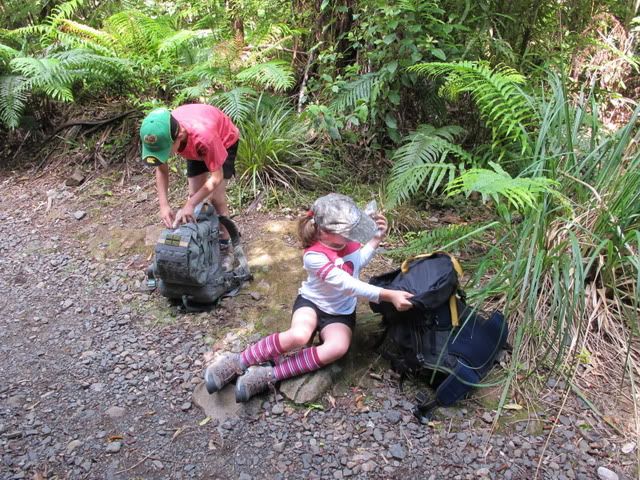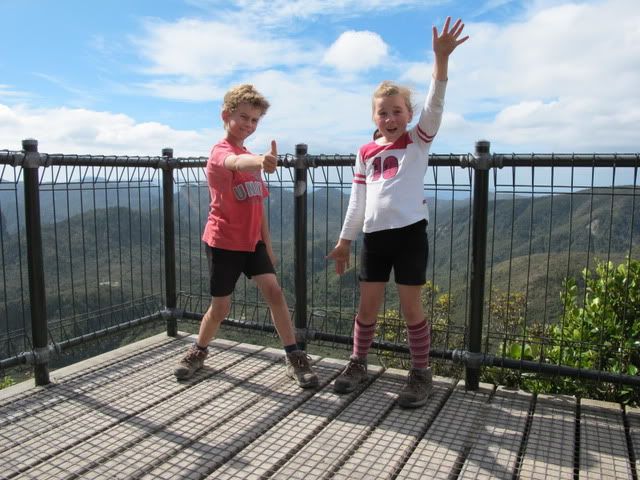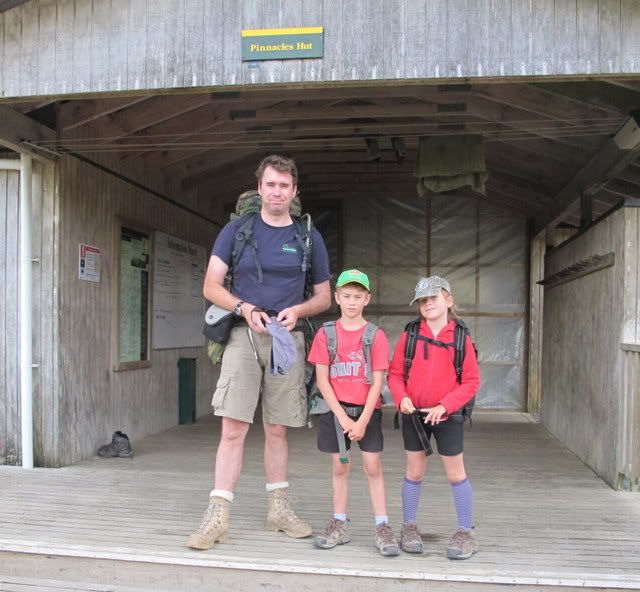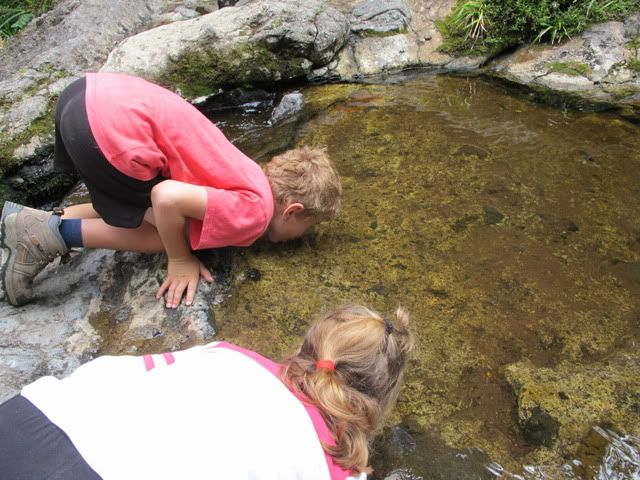I like living in NZ apart from our stunning natural beauty, Low population, ample wilderness areas, ease of access, endlessly diverse terrain, reasonable weather and outdoors culture. We have the NZ only online auction site Trade Me.
Trade Me is good as often folk from the UK who have emigrated to NZ part with bits of outdoor kit and the majority of the NZ population have no idea what that brand is so some good stuff goes reasonably cheaply. Ive profited from this several times with: a nice Phoenix tent, A nice Charlet Moser Ice Axe in a decent length and my latest bargain a Lowe Alpine Vector Commando Bergen.
Some of you may remember the excellent Survival Aids catalogues from the mid late 80s full of all sorts of useful stuff and things to aspire to or dream about.
Well I never got a Lionheart Goretex Jacket in Arctic White nor a set of Green mess tins. I think I may have ended up with a DPM map case any how I digress.
The Vector Commando was a Bergen large enough yomp with a Commandos worth of kit across a trackless moor, a built in abseil harness perfect for a day at Foggintor quarry, a built in radio pouch big enough to take a 320 or a 352 . It was horrendously expensive. Well to me it was at least.
So when one popped up on Trade Me brand new unused and with the tags still on What would you do??
It duly arrived and was as described. The only problem was the PU coating on the inside had packed a sad and decided to delaminate. Not a biggie.
It still had the Abseil harness and even though its DPM youve got to love it


Anyhow this happy arrival coincided with a planned trip to Tramp the Kauri Trail and climb the Pinnacles with my 2 oldest children.
A Kauri is a large podocarp tree that is indigenous to NZ. It had the misfortune to be: extremely straight grained, exceptionally large and very numerous in an age when sailing ships needed spars and masts and settlers needed houses. As such it was extensively logged. The Coromandel peninsular here in NZ North Island was largely a large Kauri Forest and was extensively worked. The Kauri Trail covers some of the terrain the bushmen of old worked in and part of the trail is the old pack horse route for supply trips up into the bush.
The Bushmen worked and lived in large logging camps high in the wop wops with infrequent visits to town.
Any how last Saturday while some of you were faced with snow ice and winter. NZ was in the grips of summer and the day saw us kicking off from the valley floor to climb the old pack horse route to the large Pinnacles Hut.

The trail is very popular and is in no way back country the Department of Conservation classify it as an access way for folk to get some experience. While you end up in some serious country the trail is exceptionally well marked. It is not however straight forward there is some significant height gain from the valley to the hut. Height gain over a shot distance which means its steep.
At the end of January were off down to the South Island for a tramping trip so this was a bit of a training session and a good excuse to get the Commando packed up and give it a work out. Anyhow after the obligatory photo we got going. My oldest Children are twins and are 7. Ive done a fair bit of backpacking and tramping with them now so they are old hands in some respect. They carry all of their essential kit themselves I lug the food and cooking gear along with my essential kit and any add on items like a game of Uno or the radio. After the first swing bridge the trail takes and upwards turn and the climb begins.


Soon you hit the pack horse steps.

After a couple of hours a few lolly stops. Amazement that the GPS never works even in open clearings. We ended up at a feature known a Hydro camp. Back in the 1950s the department of Hydro generation set up a bush camp here to erect power pylons over the main range and bring electrification to the eastern Coromandel. Yep no power there until the mid late 1950s. The camp is now a large clearing with a bit of Manuka / Kanuka re-growth and a nice stream.

We had lunch here in the shade out of the sun as the temp was in the high 20s.
Boots back on and lunch eaten we cracked on with the trail to the Pinnacles hut which took us about an hour. Passing a high point on the track and a good view of the pinnacles themselves.

We left the valley at about 10:30 and got to the hut by 3:15 which is not bad going for small legs with a climb involved.
We settled into the Pinnacles Hut. The hut is a large affair and can house up to 80 folk its the largest in NZ. If you have ever spent a night in a large Alpine hut then its remarkably similar with a kitchen and bunk rooms a nice deck. Toilets and even a cold water shower. We grabbed a bed space each sorted our kit out had a tomato soup ( a ritual I always have on arrival at a hut or camp spot is to have some soup) and chilled out. After a couple of hours the hut was filling up Id been beaten 6 times a Uno by a pair of 7 year olds playing shrewdly against Dad. So we decided to climb the Pinnacles.
The path up has been upgraded in recent years from a muddy nightmare to a graded affair with steps. A quick 30 minutes saw the track and steps off and we were stood on a col between a minor pinnacle and the main pinnacle. The track now becomes a sort of Via Ferrata with a couple of bolted ladders and some rock staples to help you over the tricky bits and after a scramble you end up on a nice viewing platform with: panoramic views, excited kids and a sense of accomplishment that getting to the top of a mountain gives you Special times




Descending is straight forward and after another 40 minutes were back at the hut ready for more Uno while Dad sorts out a big feed of pasta salami cheese sauce washed down with a Milo and some chocolate A mountain of a meal for a mountain of a day. After dinner we avoid the crowds at the hut and head down to one of the old kauri dams not too far away.

Chopping big trees down is one thing but how do you get a trunk weighing several tons down the hill so is can be processed? The way they did it was to dam streams then work the timber either side of the stream rolling the logs into the stream bed. At the opportune point the dam would be tripped and the flow of water carried the timber down stream into the valley floor for processing. All over the Corromandel you can find Kauri dams or remains of them. The process was used from the 1850s up until the late 1920s when the logging era came to an end. Theyd chopped down all of the timber of worth that was accessible with the technology of the period.
We tracked back to the hut and watched the sun set the Children played on an old kauri stump next to the Helo pad with the mountains as a backdrop before settling down for the night.

Next Day we kicked off early to bet the crowds in the kitchen, squared away breakfast packed up and after the hut photo we got going retracing our steps to Hydro camp and passing a big old abandoned Kauri Log in the process


The temp was warmer then Saturday in the low 30s and with no breeze.
A quick change of tracks at Hydro Camp and we were now on the Billy Goat track that traverses a ridge before dropping steeply to the valley floor.

Passing an old Kauri Stump on the way and some impressive views. We found a spot to fill up with water. I lug a 3 ltr bladder and the children have about 1 ltr each which we can top up from the bladder if needs be. The climb to the ridge top was hot and working our way along the ridge was hot work as was dropping off the back end.



We passed the old logging tramway that was built to access the Kauri in the Billy Goat basin. These trees had escaped felling longer than the restas the stream in the basin terminates in a 160m waterfall so moving logs using the stream would have resulted in the timber getting smashed. By the late 1900s improvements in technology allowed the use of a steam hauler to move bogies up an incline track to shift the timber out of the basin and down into the valley. The Billy goat basin was logged until the Kauri here ran out in the late 20s also.

After this it was a hop skip and jump back to the car. Then Ice cream and a cold drink at the garage and then home .
Trade Me is good as often folk from the UK who have emigrated to NZ part with bits of outdoor kit and the majority of the NZ population have no idea what that brand is so some good stuff goes reasonably cheaply. Ive profited from this several times with: a nice Phoenix tent, A nice Charlet Moser Ice Axe in a decent length and my latest bargain a Lowe Alpine Vector Commando Bergen.
Some of you may remember the excellent Survival Aids catalogues from the mid late 80s full of all sorts of useful stuff and things to aspire to or dream about.
Well I never got a Lionheart Goretex Jacket in Arctic White nor a set of Green mess tins. I think I may have ended up with a DPM map case any how I digress.
The Vector Commando was a Bergen large enough yomp with a Commandos worth of kit across a trackless moor, a built in abseil harness perfect for a day at Foggintor quarry, a built in radio pouch big enough to take a 320 or a 352 . It was horrendously expensive. Well to me it was at least.
So when one popped up on Trade Me brand new unused and with the tags still on What would you do??
It duly arrived and was as described. The only problem was the PU coating on the inside had packed a sad and decided to delaminate. Not a biggie.
It still had the Abseil harness and even though its DPM youve got to love it


Anyhow this happy arrival coincided with a planned trip to Tramp the Kauri Trail and climb the Pinnacles with my 2 oldest children.
A Kauri is a large podocarp tree that is indigenous to NZ. It had the misfortune to be: extremely straight grained, exceptionally large and very numerous in an age when sailing ships needed spars and masts and settlers needed houses. As such it was extensively logged. The Coromandel peninsular here in NZ North Island was largely a large Kauri Forest and was extensively worked. The Kauri Trail covers some of the terrain the bushmen of old worked in and part of the trail is the old pack horse route for supply trips up into the bush.
The Bushmen worked and lived in large logging camps high in the wop wops with infrequent visits to town.
Any how last Saturday while some of you were faced with snow ice and winter. NZ was in the grips of summer and the day saw us kicking off from the valley floor to climb the old pack horse route to the large Pinnacles Hut.

The trail is very popular and is in no way back country the Department of Conservation classify it as an access way for folk to get some experience. While you end up in some serious country the trail is exceptionally well marked. It is not however straight forward there is some significant height gain from the valley to the hut. Height gain over a shot distance which means its steep.
At the end of January were off down to the South Island for a tramping trip so this was a bit of a training session and a good excuse to get the Commando packed up and give it a work out. Anyhow after the obligatory photo we got going. My oldest Children are twins and are 7. Ive done a fair bit of backpacking and tramping with them now so they are old hands in some respect. They carry all of their essential kit themselves I lug the food and cooking gear along with my essential kit and any add on items like a game of Uno or the radio. After the first swing bridge the trail takes and upwards turn and the climb begins.


Soon you hit the pack horse steps.

After a couple of hours a few lolly stops. Amazement that the GPS never works even in open clearings. We ended up at a feature known a Hydro camp. Back in the 1950s the department of Hydro generation set up a bush camp here to erect power pylons over the main range and bring electrification to the eastern Coromandel. Yep no power there until the mid late 1950s. The camp is now a large clearing with a bit of Manuka / Kanuka re-growth and a nice stream.

We had lunch here in the shade out of the sun as the temp was in the high 20s.
Boots back on and lunch eaten we cracked on with the trail to the Pinnacles hut which took us about an hour. Passing a high point on the track and a good view of the pinnacles themselves.

We left the valley at about 10:30 and got to the hut by 3:15 which is not bad going for small legs with a climb involved.
We settled into the Pinnacles Hut. The hut is a large affair and can house up to 80 folk its the largest in NZ. If you have ever spent a night in a large Alpine hut then its remarkably similar with a kitchen and bunk rooms a nice deck. Toilets and even a cold water shower. We grabbed a bed space each sorted our kit out had a tomato soup ( a ritual I always have on arrival at a hut or camp spot is to have some soup) and chilled out. After a couple of hours the hut was filling up Id been beaten 6 times a Uno by a pair of 7 year olds playing shrewdly against Dad. So we decided to climb the Pinnacles.
The path up has been upgraded in recent years from a muddy nightmare to a graded affair with steps. A quick 30 minutes saw the track and steps off and we were stood on a col between a minor pinnacle and the main pinnacle. The track now becomes a sort of Via Ferrata with a couple of bolted ladders and some rock staples to help you over the tricky bits and after a scramble you end up on a nice viewing platform with: panoramic views, excited kids and a sense of accomplishment that getting to the top of a mountain gives you Special times




Descending is straight forward and after another 40 minutes were back at the hut ready for more Uno while Dad sorts out a big feed of pasta salami cheese sauce washed down with a Milo and some chocolate A mountain of a meal for a mountain of a day. After dinner we avoid the crowds at the hut and head down to one of the old kauri dams not too far away.

Chopping big trees down is one thing but how do you get a trunk weighing several tons down the hill so is can be processed? The way they did it was to dam streams then work the timber either side of the stream rolling the logs into the stream bed. At the opportune point the dam would be tripped and the flow of water carried the timber down stream into the valley floor for processing. All over the Corromandel you can find Kauri dams or remains of them. The process was used from the 1850s up until the late 1920s when the logging era came to an end. Theyd chopped down all of the timber of worth that was accessible with the technology of the period.
We tracked back to the hut and watched the sun set the Children played on an old kauri stump next to the Helo pad with the mountains as a backdrop before settling down for the night.

Next Day we kicked off early to bet the crowds in the kitchen, squared away breakfast packed up and after the hut photo we got going retracing our steps to Hydro camp and passing a big old abandoned Kauri Log in the process


The temp was warmer then Saturday in the low 30s and with no breeze.
A quick change of tracks at Hydro Camp and we were now on the Billy Goat track that traverses a ridge before dropping steeply to the valley floor.

Passing an old Kauri Stump on the way and some impressive views. We found a spot to fill up with water. I lug a 3 ltr bladder and the children have about 1 ltr each which we can top up from the bladder if needs be. The climb to the ridge top was hot and working our way along the ridge was hot work as was dropping off the back end.



We passed the old logging tramway that was built to access the Kauri in the Billy Goat basin. These trees had escaped felling longer than the restas the stream in the basin terminates in a 160m waterfall so moving logs using the stream would have resulted in the timber getting smashed. By the late 1900s improvements in technology allowed the use of a steam hauler to move bogies up an incline track to shift the timber out of the basin and down into the valley. The Billy goat basin was logged until the Kauri here ran out in the late 20s also.

After this it was a hop skip and jump back to the car. Then Ice cream and a cold drink at the garage and then home .
